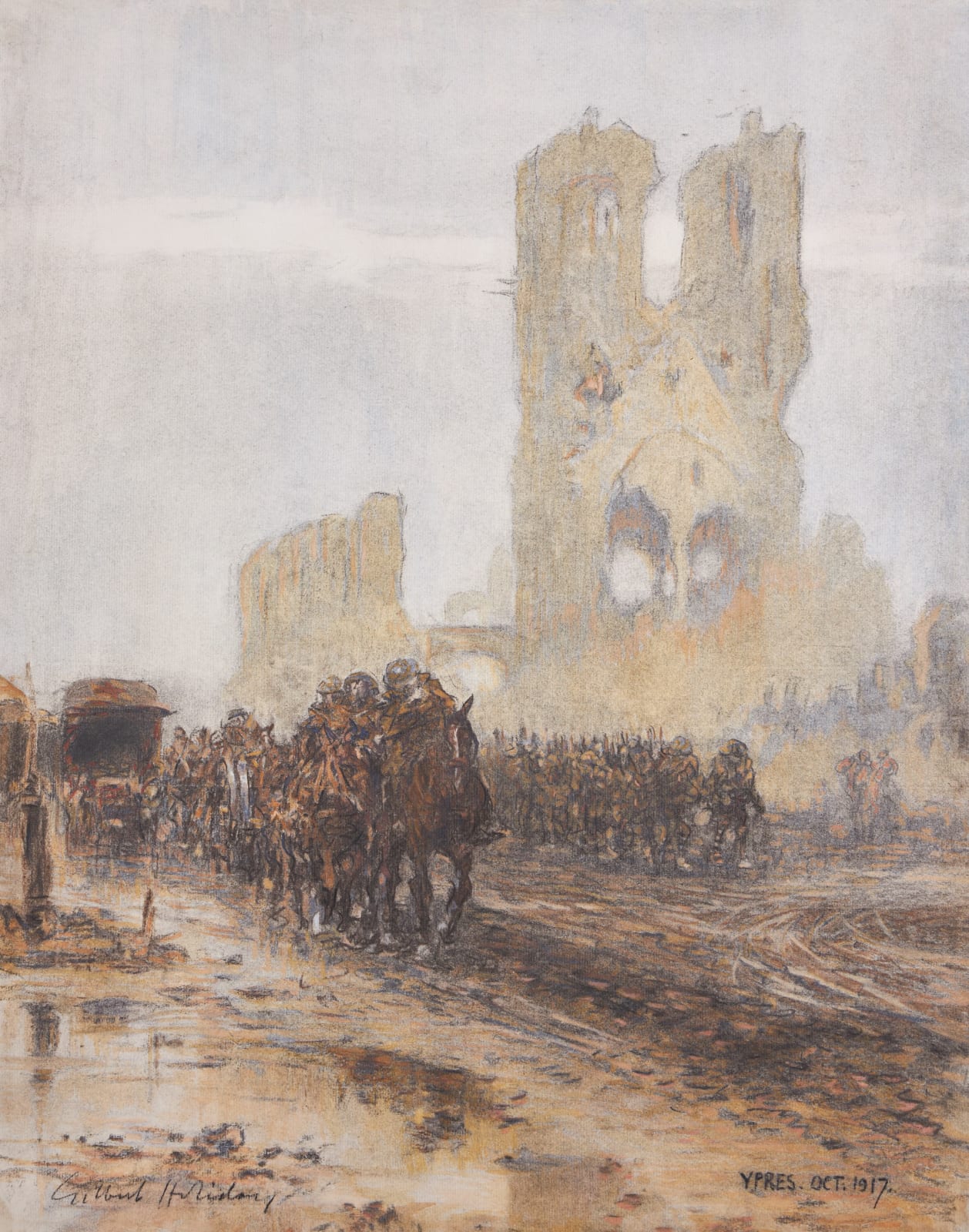Gilbert Joseph Holiday British, 1879-1937
The Third Battle of Ypres, also known as the Battle of Passchendaele, took place from July to November 1917 with forces fighting for control of the ridges south and east of the city. In that time, the Allied forces advanced about five miles and suffered over 250,000 soldiers killed, wounded or missing. Likely making their way to the front, an ambulance proceeds at the left of this composition, mounted horses draw artillery at the centre, and a column of soldiers marches on foot at the right. In the background stands the ruined Cloth Hall. Completed in 1304 and once one of the largest commercial buildings of the Middle Ages, it was largely destroyed as a result of artillery fire on Ypres. After the war it was painstakingly rebuilt to its original state and now houses the Flanders Fields Museum.
A similar painting by Holiday, Horse-drawn Transports (possibly an artillery train), Passing the Ruined Cloth Hall, Ypres, 1917, is in the collection of the National Army Museum. The museum acquired the painting from the gallery of the late David Cohen who is known to have also handled a further three similar works by Holiday: two chalk sketches titled Ypres - Artillery convoy on road passing St Martin's Church and Ypres, The City of Death, Cloth Hall and St Martin's Church, and a watercolour painting titled An ammunition column passing through Ypres, 1917. The present work is notable for offering the closest view of the horses and soldiers in this group of compositions.
In his article on Holiday, published in the April/May 2008 edition of Stand To!, the journal of The Western Front Association, Cohen wrote that '[Holiday] played an active part in drawing up plans of enemy positions, often venturing into No Man's Land with his sketch book, at great risk. Some of [his] most haunting work was later produced from his experiences at the Third Battle of Ypres'.
With thanks to The Western Front Association for their assistance.
